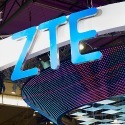ZTE may be back in the black but its handset sales have fallen off a cliff.

ZTE's network infrastructure business appears to have survived the vendor's 2018 US components ban, but last year's high-profile drama has been devastating for its handset business.
The Chinese vendor returned to profit in the first half of 2019, with a net profit 1.47 billion Chinese yuan (US$205 million) on 13% higher sales of RMB44.6 billion ($6.23 billion).
In the same period a year earlier it had recorded a RMB7.82 billion ($1.09 billion) loss after copping a $1.4 billion US government fine for breaching the terms of an earlier settlement over illicit Iran exports.
The US Commerce Department also slapped a ban on component exports to the Chinese firm, bringing production to a halt for three months. The first half year figures show the carrier equipment business has recovered to the same level as two years ago, with RMB32.5 billion ($4.54 billion) in revenue. It even raised operating margin by nearly three percentage points.
But the Consumer Business unit, which comprises the vendor's mobile device operations, has fallen off a cliff.
In the first half of 2017, ZTE shipped handsets to the value of RMB17.9 billion ($2.5 billion), accounting for a third of total revenue.
In the same period this year it sold just RMB7.4 billion ($1.03 billion) worth of devices, down 36% from last year and nearly 60% below the 2017 level.
ZTE's earnings statement did not address the issue but clearly the uncertainty in its supply chain, as well as the reputational impact of last year's controversy, are the main factors in driving away channel partners and consumers.
Beside the slump in handsets, ZTE's international revenue has also taken a hit, down 26% year-on-year.
However, the China 5G market looks promising. Along with other domestic brands such as Huawei and Oppo, ZTE will be a 5G handset launch partner for each of its domestic market's three large operators.
It stole a march on its rivals when it launched China's first 5G smartphone, the Axon 10 Pro 5G, earlier this month.
In the future, ZTE says it will develop "multi-form 5G terminal products" and develop its carrier and channel partnerships.
Unsurprisingly, 5G dominates the outlook for ZTE's carrier networks as well. It has signed 25 5G commercial contracts and says it is partnering with more than 60 operators around the world.
It sees opportunities emerging from large-scale 5G deployment and industrial IoT apps. And the vendor says it plans to leverage its growing research and developments capabilities: The tech war and the threat of further US sanctions helped spur a 28% increase in R&D spend in the first half of this year. The key areas of research are 5G wireless, core and access networks, and chips, ZTE noted.
— Robert Clark, contributing editor, special to Light Reading
Read more about:
AsiaAbout the Author(s)
You May Also Like


.jpeg?width=300&auto=webp&quality=80&disable=upscale)








